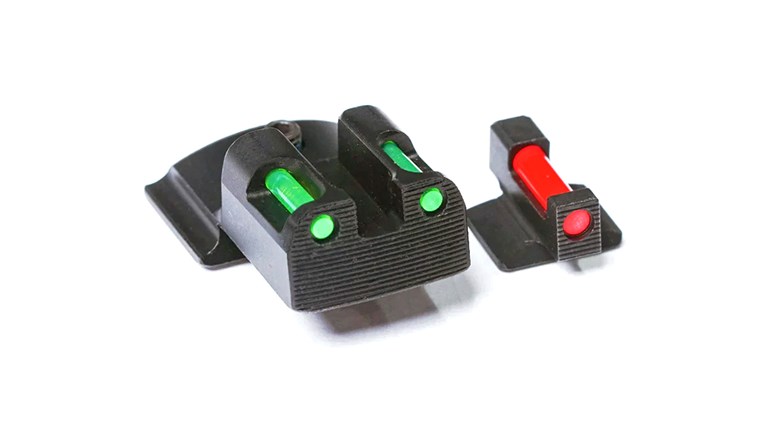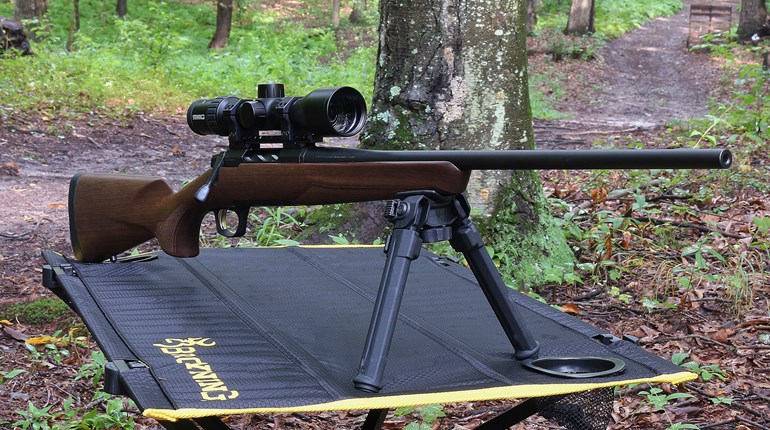
We invoke a thoroughly Western tradition today, and let out a hearty “Yee haw!”
For this enthusiasm, we have the USPSA Board and President Phil Strader to thank: The six established divisions are now joined by a seventh, the provisional “Carry Optics” class. In the ranks of the premier competitive tactical shooting venue (arguably, the good folks at IDPA might well assert), these pistols deserve a place.
The broad strokes of the new division are best and most simply described as “Production” Division pistols with red-dot sights. If that remains gobbledygook, come at it the other way—no single-action (1911-style) triggers, no compensators or ports, no more than 10 rounds/magazine, and no holsters or magazine holders of the generally acknowledged “race gun” type. If the rundown seems like it’s more features out than in, better click that Production link: We quit counting at over 400 accepted pistol models from nearly 50 manufacturers. If you don’t already own one, it’s an easy problem to fix.
But “who should care,” we posit, is even more interesting.

As we’ve pointed out on several occasions (here, here and here) the “reflex” sight technologies are here to stay. Massive improvements in battery life and overall durability are part of the equation, but the red dot’s ability to get certain types of shooters back in the fray also figures prominently.
Vision issues – There’s no way to put a good face on this one: Visual acuity lessens as those pages come off the calendar. A consequence is that many shooters beyond age 40 or 45 who might otherwise like to keep (or upgrade) their gun-handling/shooting skills stay out of USPSA matches because they can’t manage the perceived sighting and targeting tasks. We’d argue doing so is baloney, but that is for another time.
What reflex sights can do for these shooters is allow them to compete with an existing distance correction in the dominant eye, and irrespective of the mechanism of that correction (eyeglasses, contacts or surgery). In other words, a red dot sight puts the target image and aiming cue at the same perceived distance—no more fuzzy sights and clear target, or vice versa.

Vision and Handedness – This is a concomitant problem, a sort of “special case,” as we recently discussed. It occurs when the brain’s natural preference for using one hand over the other doesn’t correspond to “eyedness”—the brain’s corresponding preference for the image of one eye over the other. Such cross-dominance can create some pervasive difficulties, but is also moderated by the use of reflex sighting tech: Because the aiming cue doesn’t have to be nearly so carefully aligned as conventional notch-and-post, head position relative to sight position becomes less delicate. If the dot (or other shaped reticle—Leupold, for instance) is on target, no matter where it appears within the sight, initiate! Go here for a detailed explanation of how this works in a shooting context.
Practical Practice – USPSA is criticized in some circles as being an “arms race.” Trying our hardest, we see the point to a small extent, particularly in the Open division—the only one to previously allow reflex/red-dot sights. In that division, a remotely competitive firearm is both great fun, and seriously impractical outside the match environment. But critics go much too far when they suggest that the skills and technology have no other application: The military and LE communities have paid serious attention to largely civilian advances in this arena, and have employed many of them for years.
Carry Optics division is the logical extension of that body of competitive knowledge to a practical, defensive application.

"I wasn’t initially in favor of adding it, but after a lot of consideration, the Board decided we couldn’t ignore an industry trend as broad as Carry Optics,” Strader told us. “USPSA has a tradition of staying ahead, and in that spirit added a division people were obviously interested in shooting. ‘Provisional’ status gives us a chance to do that, and then reassess a little further down the road.”
The real coup, though, is marrying Production-style firearms with red-dot technology. Unlike an Open gun (which can easily cost $3,000 to $4,000), Carry Optics pistols really can be “carried,” and acquired in the $1,200 price range (for a competition Carry Optic firearm and optic; here and here, for instance). Better still, our friends at Robar can take your existing G-19, reflex sight and a couple hundred bucks, and fit you out with a true double-duty carry or competition pistol complete with backup iron sights. A few extra mags, belt, holster and mag carriers, and you’re match-ready.
Best of all, you’ll be learning firearms handling proficiency that only a lot of top-tier training—or combat—can improve upon. Each draw, shot, reload and movement will prepare for a day you hope never comes, but are determined to survive.
Now Carry on.


































